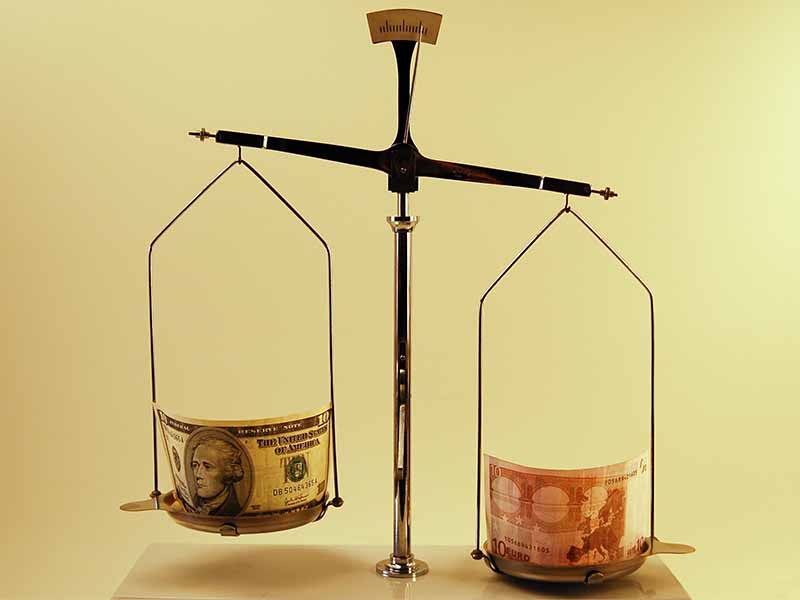Currency pairs can be key to making a big return on your strategy, but what are they and how can you use them?
Many beginners stick to less volatile pairings or work across a single currency pair. But sometimes it’s better to diversify and work with a volatile or consolidated pair.

Currency trading 101: Volatility
n the forex markets, currencies are traded as pairs (EUR/USD or USD/JPY). Those pairs have different levels of volatility – some high, some low.
As with most trading, the more volatile a pairing the greater the likelihood of a big profit or a big loss.
If you’re starting to trade online, the first thing you’ll need to work out is how to store and move your money securely. Skrill’s online wallet lets you move funds between forex platforms without disclosing your personal details – all you need is your Skrill credentials.
Next, get to know the basics. What exactly are the pairs and how do they interact? Which are the more volatile pairings?
The volatility-liquidity link
There’s a couple of basics you need to know before diving deeper.
- Currency pairs with high liquidity/volume in general tend to have less volatility and hence less risk than other pairs. The large trading volume is what underpins the lower volatility.
- By contrast, pairs with smaller liquidity/volume tend to have higher volatility.
Choosing pairs to trade
Less volatile pairs are often great for beginners.
However, volatile pairs offer experienced traders the chance to make a bigger profit because their price movements are more dramatic.
When deciding how much you want to invest, you should consider your tolerance for risk, desire for liquidity in the market — entering and exiting trades at will — and your knowledge of specific currencies across the short and long term.
Majors, minors and exotics
Pairs are split into three main categories: major, minor and exotic. All of which can be volatile, but minors and exotics tend to be more so.
Majors
Major currency pairs consist of the most frequently traded currencies globally. Every major currency pair has the US dollar on one side.
- EUR/USD - Euro/US dollar
- USD/JPY - US dollar/Japanese yen
- GBP/USD - British pound/US dollar

These pairs have considerable liquidity, which means trading options are always available.
Furthermore, traders can often access the lowest spreads — or brokerage costs — when trading these pairs.
Volatility among majors is generally low.

Minors
When a currency pair doesn’t include the US dollar, but still contains widely traded currencies, it’s called a minor currency pair or a cross-currency pair.
- EUR/GBP — Euro/British pound
- EUR/AUD — Euro/Australian dollar
- GBP/JPY — British pound/Japanese yen
Volume between these pairs is fairly high. Volatility is a little higher than the majors but stable on the whole.
Exotics
An exotic currency pair includes a major currency and the currency of a developing economy, such as Brazil.
Their volume is lower than minors and majors. As such, they have higher spreads.
Their volatility is typically higher than majors.
- EUR/TRY - Euro/Turkish lira
- USD/HKD - US dollar/Hong Kong dollar
- JPY/NOK - Japanese yen/Norwegian krone
Common volatile pairs
When it comes to an overall strategy for trading every pair, there isn’t an easy answer. You must build up as much knowledge about the currencies as you can and consider the political, economic and social factors that impact them.
It’s impossible to make a definitive list of the most volatile pairs, since volatility changes all the time. That said, there are some common and popular volatile pairs, including:
- AUD/JPY (Australian dollar/Japanese yen)
- NZD/JPY (New Zealand dollar/Japanese yen)
- AUD/USD (Australian dollar/US dollar)
- CAD/JPY (Canadian dollar/Japanese yen)
- AUD/GBP (Australian dollar/Pound sterling)
There are some things you need to know about these common volatile pairs.
All currencies with high volatility are more prone to slippage than currency pairs with low volatility.
Also, big news events like Brexit or trade wars can have a major impact on a currency’s volatility.
Data releases, data leaks or privacy breaches can have an impact too. For the more volatile pairs this can have an even bigger effect.
Traders can stay ahead of data releases by using an economic calendar.
As mentioned, you’ll want to keep an eye on a currency’s strength. Take the US dollar for example, and see how it’s been affected in recent times.
Be aware of your risk tolerance, skill and market/country knowledge when deciding if a volatile pair-based strategy is right for you.
A strategy centred on volatile pairings won’t be right for everyone, but for traders with enough experience they present an opportunity.




